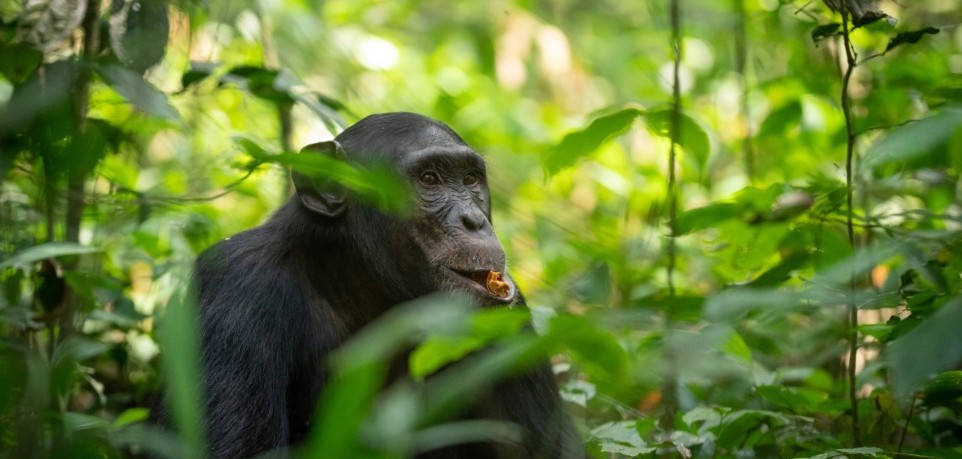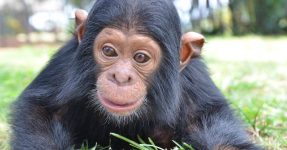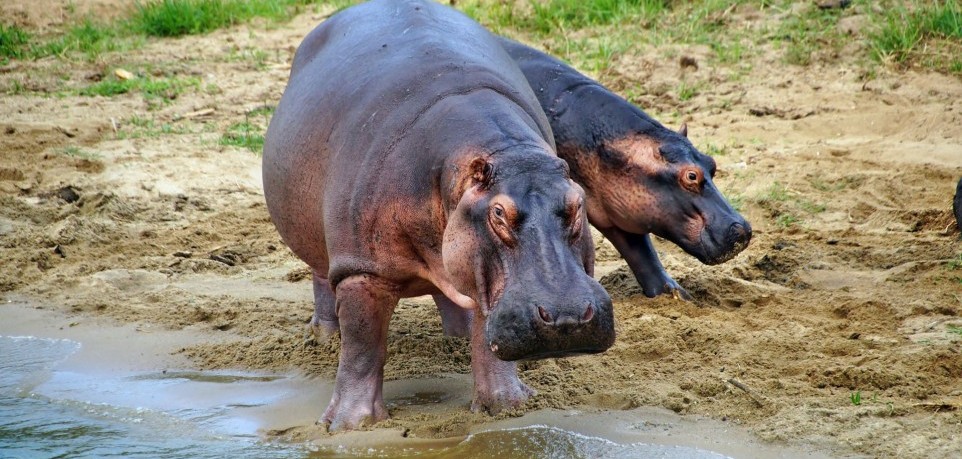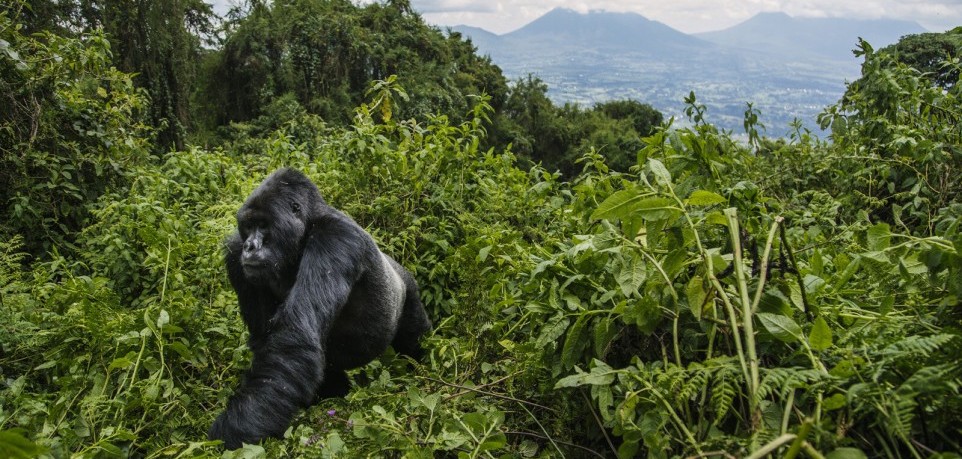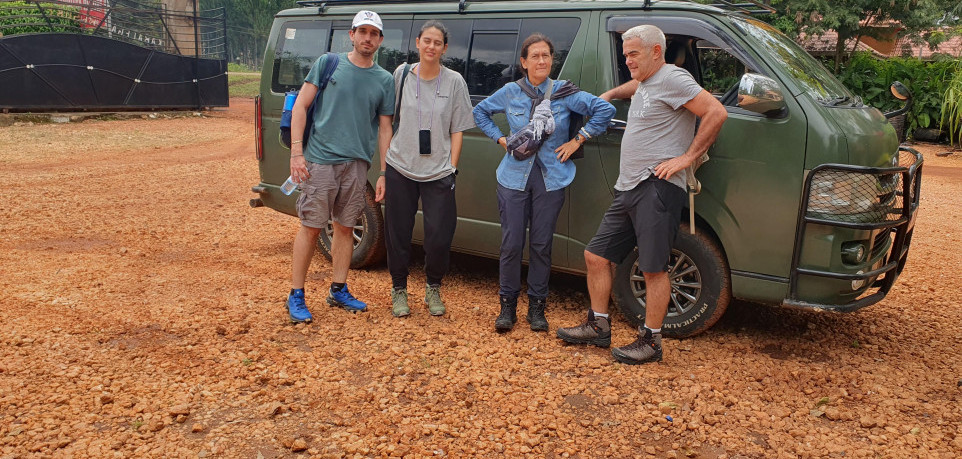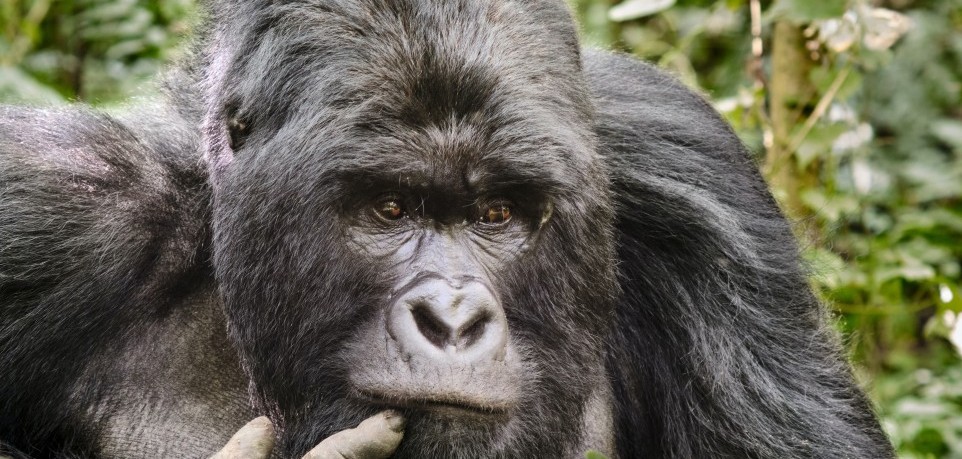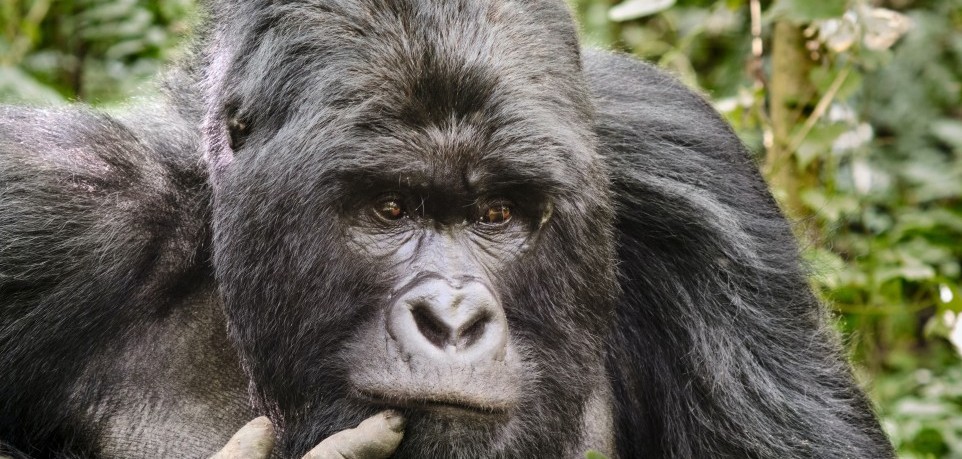Kibale Forest National Park – The Primate Capital of the World
Kibale Forest National Park is also known as the primate capital of the world. It is home to multiple primates including chimpanzees, black and white colobus monkeys, baboons, red-tailed monkeys, and many more. Chimpanzee trekking in Uganda entails hiking through the dense rain forests in pursuit of the primates, it takes about 2-5 hours depending on the location of the primates to find them. Kibale Forest National Park in western Uganda has been rated one of the best destinations in East Africa for visitors to see and visit the wild chimpanzees. After the Mountain Gorillas of Bwindi Forest National Park and Mgahinga forests, these primates come in second position as the most exciting and popular primates among tourists in Uganda.
Where is Kibale National Park located?
Located in western Uganda, approximately 348 kilometers (5 hours’ drive) from Kampala and approximately 26 kilometers southeast of the lovely Fort Portal town – one of Uganda’s most lovely places to explore. The park is close to the peaceful Ndali-Kasenda crater area, and it is only a half-day drive to Queen Elizabeth National Park, Rwenzori Mountains and Semuliki National Parks, and the Toro-Semliki Wildlife Reserve.
Southern Kibale borders Queen Elizabeth National Park, and together these protected areas protect a 180-kilometer-long wildlife migration corridor stretching from the remote southern sector of Queen Elizabeth National Park in “Ishasha” to “Sebitoli” in northern Kibale.
Covering an area of 795 square km, Kibale Forest National Park is 1,590 meters above sea level and its lowest point is at 1,100 meters below sea level. It lies at the bottom of the Albertine Rift valley. The park’s variable altitudes support a variety of ecosystems, with habitats ranging from savannah and woodland on the Rift Valley floor to wet tropical forest on the Fort Portal plateau.
From the moist evergreen forest along the Fort Portal plateau to the dry tropical forest (moist semi-deciduous) and woodland and savanna down the rift valley level, Kibale forest’s diversified vegetation offers a wide diversity of wildlife habitat. Evergreen and deciduous trees coexist in the high forest that surrounds Kanyanchu in the park’s center, with evergreen species predominating. More than 55 meters tall, the vegetation develops into a semi-closed canopy with enormous stratified tree crowns.
The undergrowth is scant and contains broad-leaved forest grasses, ferns, and herbs that can withstand the shadow. There are 351 listed tree species in the park.
Why is Kibale National Park called the Primate Capital of the World?
Kibale National Park has the highest number and variety of primates in Africa, with 13 different species. The most well-known of these are the chimpanzees, summing up to over 1450, and make this the best place to go on a chimp tracking tour. All of these primates can be seen on a safari in Uganda. Among the many animals that can be found in Kibale are the rare L’Hoest’s monkeys, the largest population of East Africa’s endangered red colobus monkeys, the black & white colobus, red-tailed monkeys, blue monkeys, olive baboons, grey-cheeked mangabeys and bush infants
There are several other wildlife in Kibale National Park, however, they are hardly seen. These consist of buffaloes, leopards, bush pigs, elephants, and duikers. A keen viewer may also be able to spot some amphibians, reptiles, and a variety of colorful butterflies.
To ensure that Chimpanzees become familiar to visitors, they are first tracked by park authorities (park rangers) who carry out the chimpanzee habituation process before tourists are invited to visit.
Chimpanzee habituation is the process of acclimating chimps to human presence before visiting them. This is a daily activity that takes up to two years to completely habituate the chimps to. Visitors had a 20% chance of meeting a chimpanzee in the wild many years ago, but today Chimpanzee trekking is 99% guaranteed.
Visitors are only allowed to stay for one hour in the presence of these endangered primates.
What is unique in Kibale Forest National Park?
One of Uganda’s most intriguing and diverse tropical forest tracts is Kibale Forest National Park, which is dominated by marshes and grasslands in the park’s northern and central regions.
There are 351 species of trees in the park, some of which reach heights of over 55 meters and are more than 200 years old.
About 70 forest animals (Mammals) call Kibale Forest National Park home, including buffalo, forest elephants, and certain antelope species. However, the park’s most distinctive feature is that it is home to 13 species of primates, including the critically endangered Chimpanzees.
The park is one of the top birding locations in Uganda due to the presence of about 375 different bird species in the forest.
A 180 km long wildlife corridor connecting the Ishasha sector, a remote southern sector of Queen Elizabeth National Park, and Sebitoli, in the north of Kibale Forest National Park, is made possible by the connection of the two national parks.
Activities in Kibale Forest National Park
Chimpanzee Habituation experience.
This is more similar to chimpanzee trekking, however unlike the typical one-hour experience, people are permitted to stay up to 6 hours with the primates on this occasion.
Additionally, chimpanzee habituation licenses are somewhat more expensive than trekking permits. One of the most fascinating walking safaris available to tourists is this one.
This 12 km trek in Kibale Forest National Park takes around 6 hours and travels through open savannah riverine forestation, tropical jungle, and swamplands, as well as swamps, grasslands, and forests along rivers.
The likelihood of seeing several primate species, various bird species, mammals, most frequently forest elephants, and ultimately the breathtaking terrain itself makes this trip highly exciting.
You report to the park headquarters, receive a briefing, and then at 8:00 am, proceed with the assistance of park rangers and porters for the forest walk.
Cultural adventures near Kibale forest.
You will get the opportunity to interact with the local Bakiga immigrants who live close to this park, as well as the indigenous Batooro people who live there. The Bakiga are immigrants from the heavily populated southwest of Uganda.
You will visit a traditional hamlet as part of the Kibale community tours to observe the Batoro people’s way of life up close. You will also visit the neighborhood church, elementary school, and traditional healer. Additionally, the Bakiga will entertain you with some upbeat traditional dances and songs.
Bigodi Swamp Walk
Bigodi, a swampy section of the jungle, is a popular destination for tourists who visit this national park. The Bigodi Wetland Sanctuary is home to a variety of animals, including uncommon primates, birds, and mammals. Every visitor to Kibale National Park must partake in this additional walking safari experience.
Six kilometers separate the main office of Kibale National Park from the Bigodi Wetland Sanctuary marsh. This is a swampy rainforest area that is referred to as a haven for birders. Usually, chimpanzee trekking is followed by a stroll in the Bigodi Swamp. It takes roughly two to three hours to stroll through the palm- and papyrus-filled marsh. On the stroll, you can see thousands of different bird species as well as roughly five different primates.
Amabere Ga’nyina mwiru expeditions.
These interesting rocks are located in a cave close to Nyakasura School in Fort Portal and are so named because when you make your way to them, you are greeted with mesmerizing waterfalls. The Batoro tribal members, who have a tale about them find a profound cultural connection to the Amabere Ga’nyina mwiru rocks.
Approximately 5 miles from Fort Portal town, this location is home to both natural and mythical wonders. It is recommended that you bring good hiking shoes because the hike to the caverns is frequently short but slick. The site manager greets you when you arrive and walks you through the historical legend around the caves and how it relates to the Batooro culture and kingdom.
Enter the jungle trail leading you to the caves and the fascinating waterfalls. There are hills very close to the caves that visitors can hike with views of the numerous Crater lakes
Birdwatching in Kibale National Park.
The Albertine Rift region is home to 6 native bird species, including the dusky crimson wing, black-capped apalis, blue-headed sunbird, collared apalis, red-faced woodland warbler, and purple-breasted sunbird.
Other unique birds found alone in Kibale include the blue-breasted kingfisher, black bee-eater, Abyssinian ground thrush, yellow-spotted nicator, small greenbul, black-eared ground thrush, yellow-rumped tinker bird, and green-breasted pitta.
Given that the swamp alone is home to about 138 different bird species, the Bigodi nature path provides the best opportunity for bird watching in the park.
Tour the Crater Lakes
More than 50 different crater lakes may be discovered in the Kasenda area of Fort Portal, which is bordered by steep-sided volcanoes.
You will have the chance to admire this region’s distinctive landscape if you visit this gorgeous place.
In addition to Kibale Forest, which is the best location in Uganda for chimpanzee trekking, there are other places where people can travel to see chimpanzees as well. Budongo Forest in Murchison Falls National Park, Kalinzu Forest, and Kyambura Gorge in Queen Elizabeth National Park.



